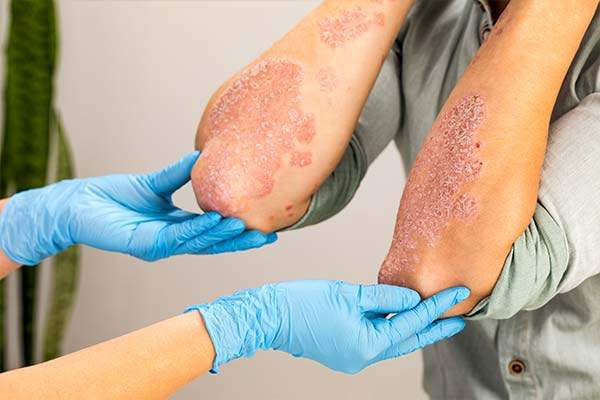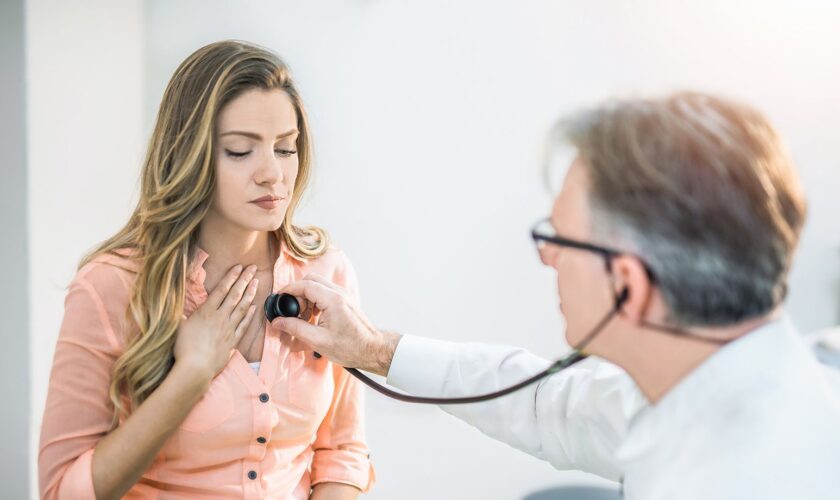Maternal infections can pose significant risks during pregnancy, impacting both the mother and the developing fetus. It’s important to understand the different types of infections, their causes, and how they are diagnosed to ensure timely and effective management.
Types of Maternal Infections
Several types of infections can affect pregnant women. These range from common viral illnesses to more serious bacterial or parasitic infections. Some of the most concerning include:
- Group B Streptococcus (GBS): A bacterial infection that can be passed to the baby during delivery.
- Cytomegalovirus (CMV): A common virus that can cause birth defects if contracted during pregnancy.
- Toxoplasmosis: A parasitic infection often contracted through contaminated food or cat feces.
- Zika Virus: A virus transmitted by mosquitoes that can cause severe birth defects, including microcephaly.
- Listeria: A bacterial infection from contaminated food that can lead to miscarriage or premature birth.
Causes of Maternal Infections
Maternal infections can arise from various sources. Some are contracted through direct contact with infected individuals, while others result from consuming contaminated food or water. Compromised immune systems can also increase susceptibility to infections during pregnancy. Understanding the causes is key to prevention. For example, pathogenic conditions can negatively affect fetal development.
Symptoms and Diagnosis
Symptoms of maternal infections can vary widely depending on the type of infection. Some infections may present with flu-like symptoms, such as fever, fatigue, and body aches. Others may have more specific symptoms, such as a rash or vaginal discharge. Diagnosis typically involves blood tests, urine tests, or cultures to identify the presence of the infectious agent. Early detection is crucial for initiating appropriate treatment and minimizing potential complications. Regular prenatal checkups play a vital role in screening for and diagnosing maternal infections.
Impact of Maternal Infections on Pregnancy
Maternal infections can significantly affect pregnancy, leading to various complications for both the mother and the developing fetus. The effects can range from mild to severe, depending on the type of infection, the timing of the infection during pregnancy, and the overall health of the mother. It’s a pretty big deal, honestly.
Effects on Fetal Development
Maternal infections can really mess with how a fetus develops. Certain infections can cross the placenta and directly infect the fetus, which can cause birth defects, developmental delays, or even fetal loss. It’s not just about direct infection, though. The mother’s immune response to an infection can also affect fetal development. For example:
- Rubella infection during early pregnancy is known to cause congenital rubella syndrome, which includes heart defects, hearing loss, and vision problems.
- Cytomegalovirus (CMV) is another common infection that can lead to developmental issues, such as hearing loss and intellectual disabilities.
- Zika virus infection has been linked to microcephaly and other brain abnormalities.
The timing of the infection is super important. Infections that happen early in pregnancy are often more harmful because that’s when the baby’s organs are forming.
Risks During Labor and Delivery
Infections can also cause problems during labor and delivery. For example, if a mother has an active herpes infection, a cesarean section might be needed to prevent the baby from getting infected during birth. Also, some infections can cause premature labor and delivery, which can lead to a whole bunch of other complications for the baby. Some of the risks include:
- Premature rupture of membranes (PROM), which increases the risk of infection for both the mother and the baby.
- Chorioamnionitis, an infection of the amniotic fluid and membranes, which can lead to sepsis in the mother and baby.
- Endometritis, an infection of the uterine lining after delivery, which can cause fever, pain, and delayed healing.
Long-Term Consequences for the Child
The long-term effects of maternal infections on a child can be pretty serious. Some children might have chronic health problems, like cerebral palsy, epilepsy, or learning disabilities. Others might have behavioral problems or developmental delays. It’s not always obvious right away, either. Sometimes, the effects don’t show up until the child is older. It’s a scary thought, but it’s important to be aware of the potential risks. Here are some potential long-term consequences:
- Increased risk of neurodevelopmental disorders.
- Higher rates of asthma and other respiratory problems.
- Compromised immune function, making the child more susceptible to infections later in life.
Mechanisms Leading to Birth Injuries
Inflammatory Responses
Maternal infections can trigger significant inflammatory responses in the mother’s body. These responses, while intended to combat the infection, can inadvertently harm the developing fetus. The release of inflammatory mediators can cross the placenta and affect fetal organ development and function. This can lead to a variety of birth injuries. It’s a complex situation where the body’s defense mechanisms have unintended consequences. Think of it like a house fire – you want to put it out, but the water can cause its own damage. The severity of the inflammatory response often dictates the extent of the injury.
Transmission of Infections to the Fetus
Some maternal infections can be directly transmitted to the fetus in utero, during labor, or after delivery. This transmission can occur through several routes:
- Across the placenta: Certain pathogens can cross the placental barrier and directly infect the fetus. This is a major concern with infections like Zika virus and cytomegalovirus (CMV).
- During vaginal delivery: The fetus can be exposed to infectious agents present in the birth canal during delivery. Group B Streptococcus (GBS) is a prime example of an infection that can be transmitted this way.
- Postnatally: Infections can be transmitted to the newborn through breast milk or close contact with the infected mother.
Understanding these transmission routes is key to implementing preventive measures. Disruptions in immune tolerance can also play a role.
Complications During Delivery
Maternal infections can also lead to complications during labor and delivery, increasing the risk of birth injuries. For example:
- Preterm labor: Infections can trigger preterm labor, leading to premature birth and its associated risks, such as respiratory distress syndrome and intraventricular hemorrhage.
- Prolonged rupture of membranes (PROM): Infections can cause PROM, increasing the risk of infection for both mother and fetus.
- Fetal distress: Maternal infections can compromise fetal oxygen supply, leading to fetal distress and the need for emergency interventions, such as cesarean sections. These interventions, while life-saving, can also carry their own risks. It’s a cascade of events where one problem leads to another, and the goal is to minimize the overall harm.
Preventive Measures for Maternal Infections
Importance of Prenatal Care
Prenatal care is really important for a healthy pregnancy. It’s not just about checking in; it’s about catching potential problems early. Regular visits to the doctor can help spot infections that might not show obvious symptoms. These visits allow for timely intervention, which can significantly reduce the risk of complications for both the mother and the baby. Think of it as a proactive approach to health, making sure everything is on track. It’s a good idea to ask your doctor any questions you have, no matter how small they seem. They’re there to help!
Vaccinations and Screening
Vaccinations are a big deal when you’re pregnant. Some vaccines, like the flu shot and the Tdap vaccine (tetanus, diphtheria, and pertussis), are actually recommended during pregnancy to protect both you and your baby. Screening for infections like Group B Strep, HIV, and other STIs is also super important. Early detection means early treatment, which can prevent these infections from causing serious problems. It’s all about being informed and taking the right steps to protect your health and your baby’s.
Lifestyle Modifications
Making some changes to your lifestyle can also lower your risk of getting infections during pregnancy. Here are some things to consider:
- Hygiene: Wash your hands often, especially after being in public places or handling food.
- Food Safety: Be careful about what you eat. Avoid unpasteurized dairy products and undercooked meats, as these can carry harmful bacteria.
- Safe Sex Practices: If you’re sexually active, use protection to prevent STIs. Talk to your partner about getting tested, too.
- Avoid Sick People: Try to stay away from people who are sick, especially during flu season. It’s better to be safe than sorry!
These simple steps can make a big difference in keeping you and your baby healthy throughout your pregnancy.
Treatment Options for Maternal Infections
Antibiotic Therapies
When a maternal infection is identified, antibiotics often become a key part of the treatment plan. The specific antibiotic used depends on the type of infection and what the bacteria are susceptible to. It’s really important to choose an antibiotic that is safe to use during pregnancy, as some can harm the developing fetus. Doctors carefully weigh the benefits against the potential risks before prescribing anything. The dosage and duration of treatment also depend on the severity of the infection. For example, a simple urinary tract infection might only need a short course of antibiotics, while a more serious infection like sepsis could require a longer, more intensive treatment.
Monitoring and Management
Treating maternal infections isn’t just about giving antibiotics; it also involves careful monitoring and management. This means regularly checking the mother’s vital signs, like temperature, blood pressure, and heart rate, to see how well she’s responding to the treatment. Blood tests and other lab work might be done to keep an eye on the infection levels and make sure the antibiotics are working. If the infection is severe, the mother might need to be hospitalized so she can be monitored more closely. Fetal monitoring is also crucial to assess the baby’s well-being. This can involve things like ultrasound scans and heart rate monitoring to make sure the baby isn’t being affected by the infection or the treatment. It’s a whole team effort to keep both mom and baby safe.
Role of Healthcare Providers
Healthcare providers play a huge role in managing maternal infections. This includes:
- Early detection through prenatal screenings.
- Accurate diagnosis of the infection.
- Developing a treatment plan that’s tailored to the individual patient.
- Educating the mother about the infection, the treatment, and what to expect.
Doctors, nurses, and other healthcare professionals work together to provide the best possible care. They also need to be ready to deal with any complications that might arise, like preterm labor or fetal distress. It’s a challenging job, but their expertise is essential for ensuring positive outcomes for both mother and child. For example, cytomegalovirus (CMV) treatment is not always needed.
Legal Implications of Birth Injuries
Understanding Medical Malpractice
When a maternal infection leads to a birth injury, the question of medical malpractice often arises. Medical malpractice occurs when a healthcare provider’s actions deviate from the accepted standard of care, resulting in harm to the patient. Establishing malpractice requires demonstrating that the healthcare provider had a duty of care, breached that duty, and that the breach directly caused the injury. It’s a complex process, and it usually involves expert medical testimony to prove the standard of care wasn’t met. It’s not always easy to prove, but it’s important to understand your rights if you think something went wrong.
Case Studies of Maternal Infection Claims
Examining past cases can shed light on how maternal infection claims are handled in the legal system. These cases often involve infections like Group B Streptococcus (GBS), cytomegalovirus (CMV), or Zika virus. Here are some common themes:
- Failure to diagnose or treat the infection promptly.
- Inadequate monitoring of the mother and fetus during pregnancy or labor.
- Errors in administering medication or other treatments.
Each case is unique, but these examples illustrate the types of situations where legal action may be warranted. The outcomes of these cases vary widely depending on the specific facts and applicable laws.
Preventing Legal Issues Through Care
Preventing legal issues related to maternal infections starts with providing high-quality, comprehensive care. This includes:
- Thorough prenatal screening for infections.
- Prompt and appropriate treatment of any identified infections.
- Clear communication with patients about the risks and benefits of treatment options.
By prioritizing patient safety and adhering to established medical guidelines, healthcare providers can minimize the risk of birth injuries and subsequent legal claims. It’s all about doing what’s right for the patient and documenting everything carefully.
Research and Future Directions
Current Studies on Maternal Infections
Research into maternal infections is constantly evolving. Scientists are working to better understand how different infections affect both the mother and the developing fetus. A lot of studies focus on identifying new biomarkers that can help with early detection of infections. This is super important because early treatment can significantly improve outcomes. There’s also a big push to develop more effective and safer treatments for infections during pregnancy. For example, researchers are looking at how SARS-CoV-2 infection impacts pregnancy outcomes, especially in the early stages.
- Identifying new biomarkers for early detection
- Developing safer and more effective treatments
- Understanding long-term effects on children
Innovations in Treatment
New technologies and treatment strategies are being explored to combat maternal infections. One promising area is the development of targeted therapies that can specifically address the infection without harming the fetus.Nanotechnology is also being investigated as a way to deliver drugs more effectively. Another area of innovation is the use of immunotherapy to boost the mother’s immune system and help her fight off the infection. It’s all about finding ways to treat the infection while minimizing risks to both mom and baby.
- Targeted therapies
- Nanotechnology for drug delivery
- Immunotherapy
Public Health Initiatives
Public health initiatives play a crucial role in preventing and managing maternal infections. These initiatives often focus on improving access to prenatal care, promoting vaccination, and educating women about the risks of infection during pregnancy. There’s also a growing emphasis on addressing health disparities and ensuring that all women have access to the resources they need to stay healthy. Public health programs also work to track the prevalence of different infections and identify emerging threats. It’s a team effort involving healthcare providers, public health officials, and community organizations.













